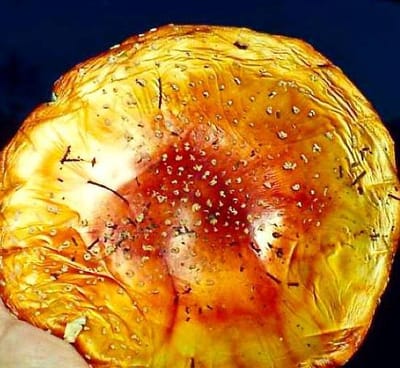Articles #exstasy
Ritualized Ecstasy Kybele's image is of unutterable sanctity, both in horror and in reverence. Ritualized processing of intoxicants, ecstasy, and local populations thrived. Sacrifice occurred in the groves, and orgies in the caverns that echoed and roared with frenzy. They enticed their dead god back up the axis mundi like a serpent from the underworld, the heart of the Goddess‘ rites. In these groves, trees were hewn into images of the Divine Bridegroom, a nameless god, whose phallus was called out from the earth for ritual consumption. On the forest floor, Amanita muscaria itself appears as a blazing red fire glowing beneath the pine. Historically, the cult first emerged from the sacred caverns and groves at Gordium, the legendary city of King Midas (738-696 BCE). More likely, her hidden cult was introduced there. There must have been a strong unconscious emotional interest and appeal for other centers of worship popped up like mushrooms -- 23 highland monuments. Her first lavish temple was built in the early Phrygian period, around the eighth century BCE. The meteoric idol of the Mother really came from there. Her secret identity is a continuation of primitive, animistic thought. They must have been thunderstruck by such firefall. They knew what it was and where it came from -- not in scientific terms, but in terms of their collective mythic lives. More recently Antonin Artaud used the motif metaphorically. "And there is a luminous point where all reality is rediscovered, only changed, transformed, by -- what? -- a nucleus of the magic use of things. And I believe in mental meteorites, in personal cosmogonies." Kybele was linked to Dionysus. Attis, Adonis, Bachus, Bromius, Tammuz, Pan, Sabazius, Serapis, Zalmoxius, Zeus, and Orpheus himself - are replicas of their grand primordial archetype Dionis. The variations which appear among them resulted from the transplantation of the god from one region to another. The migrating Phrygians brought the Dionis/Sabazius cult with them when they settled in Anatolia in the early first millennium BCE. The pinecone that tipped his Thyrsus linked him to Kybela (lat. Cybele), another Brygo/Phrygian primordial deity. This phallic scepter tipped with a pinecone (symbolizing pineal gland/third eye) was also his emblem; the potent panther was his totem-animal, The god's origins trace to Macedonia, (Pelagonia and Paionia in Upper Macedonia, the Phrygian's ancestral homeland). The story of Attis also originated here. A eunuch priest, Atys traveled from Pessinus to Sardis, the Lydian capital at the foot of mount Tmolos, where 'the ancient goddess, Kubaba, from Mesopotamia and the Phrygian goddess first appear to have merged.' (Gough, 2014) Kybele is virtual, chaotic, and autochthonous. The Roman orator, Marcus Tullius Cicero (106 – 43 BCE), said the Anatolian goddess was revered, ‘by all the kings who have ever held rule in Europe and in Asia.’ She eventually refracted into competing narratives, many of which contain residue of past paradigms lost in the mists of deep time. The essence of all phenomena is a vibrant rhythm, the intimate nature of phenomena is directly perceptible by polyrhythmic human consciousness. For this reason, imitating is knowing. The echo is the paradigm of imitation and initiation. Her ordeal was a psychedelic metaphysical journey.
Read More
